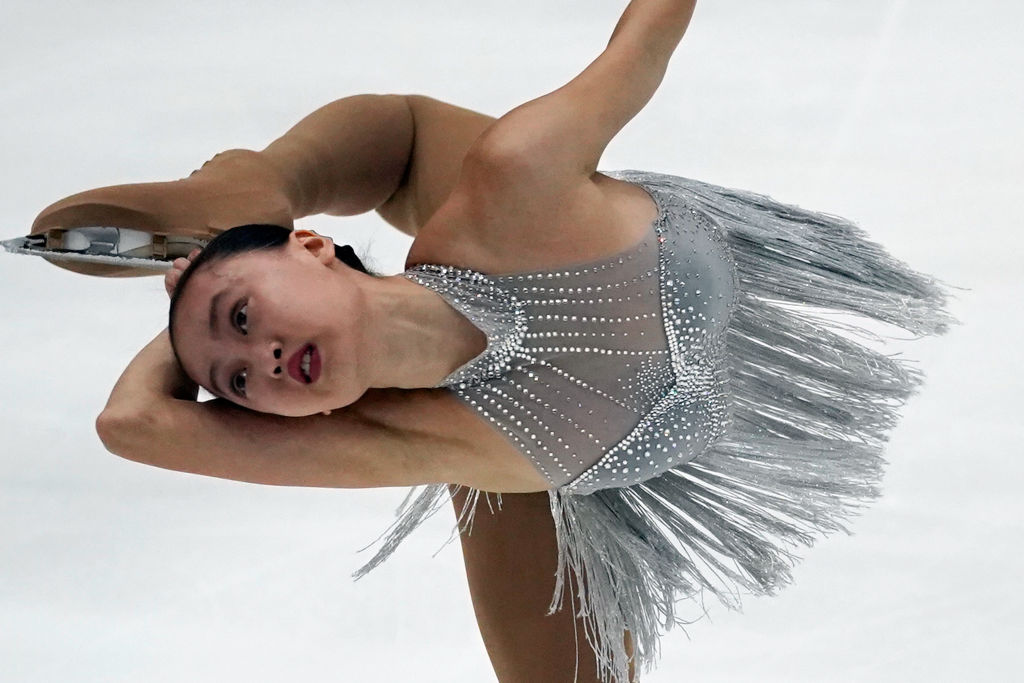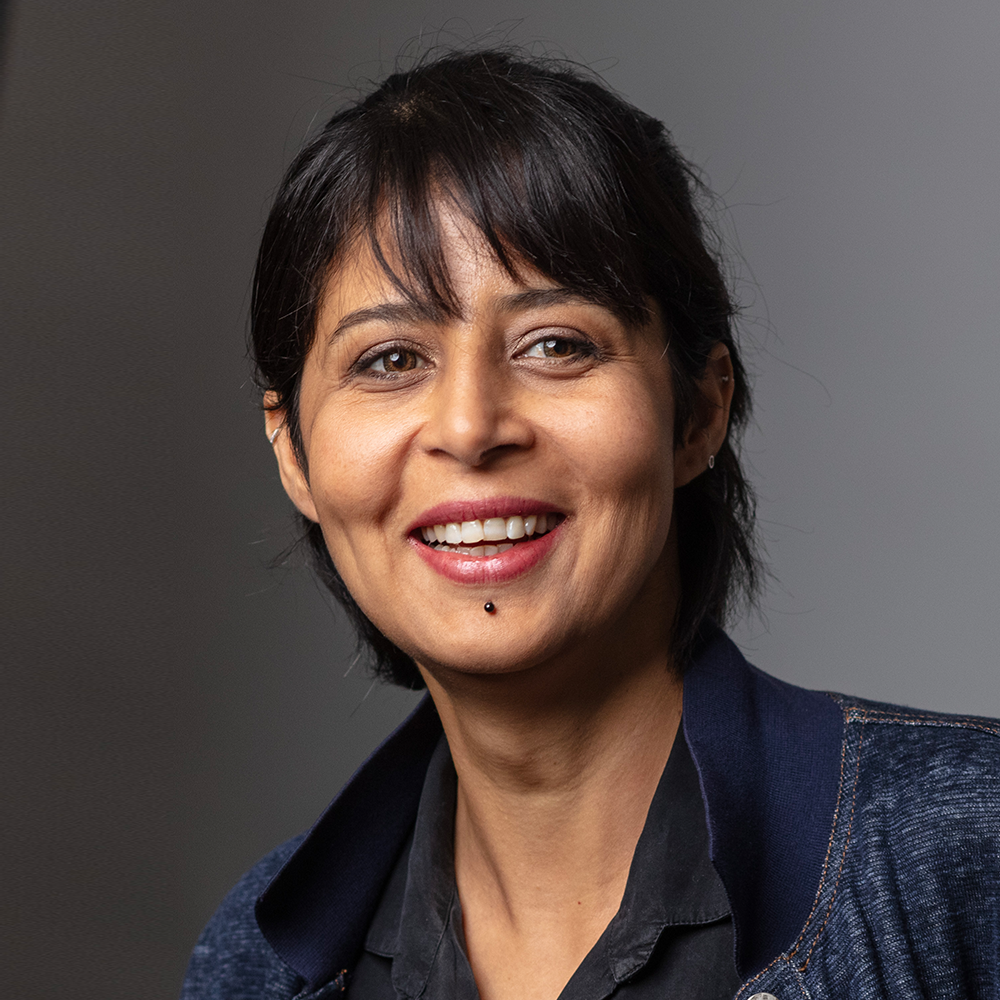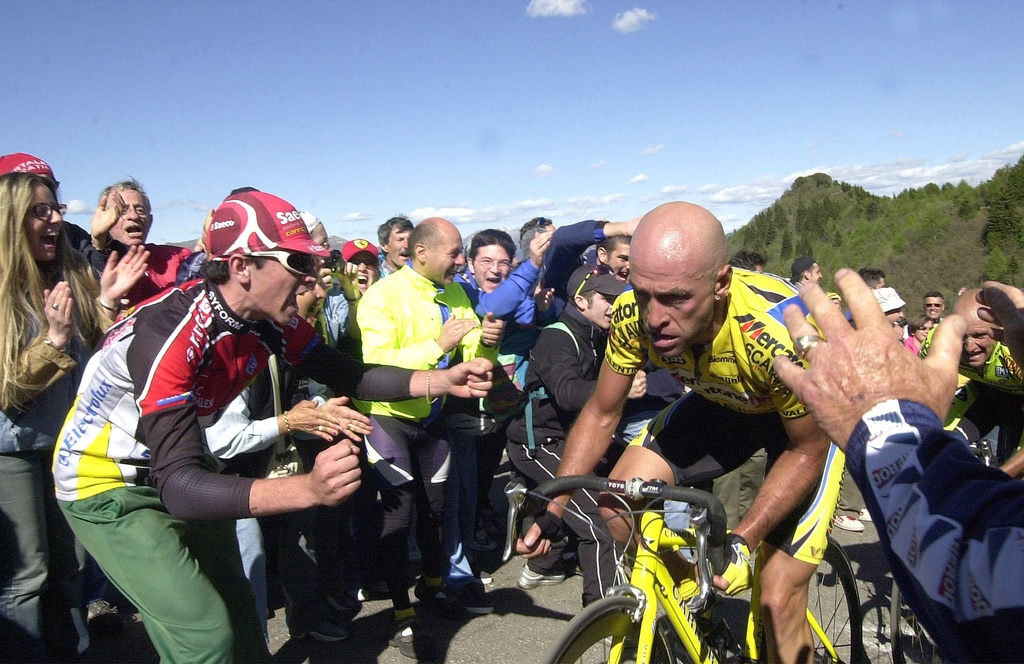Olympic Games: when the dream becomes a nightmare
Years of hard training, strict discipline, sweat and pain go into an Olympic gold medal. But for some the price of success is much higher: harassment, abuse and rape. This has been tolerated in sport clubs for years as a means to an end. But mindsets are slowly shifting.
Just days ahead of the start of the Olympics and Paralympics in Japan, Human Rights Watch (HRW) shed light on the dark side of the world of sports. The organisation launched a petitionExternal link calling on the Japanese government to end abuse in sports and to establish standards for the elimination of corporal punishment in the sports world.
The petition comes one year after the release of a HRW surveyExternal link, which revealed that 18% of the respondents in Japan under the age of 25 in more than 50 sports had experienced violations, including verbal abuse, punching in the face, kicking and hitting with objects such as rackets or sticks. Water deprivation, suffocation, whipping with whistles or bats, sexual assault and harassment are part of a so-called “Taibatsu” culture, widespread in the Japanese sports world. The report documents child athletes in Japan suffering from depression, suicide, physical disabilities and lasting trauma as a result of these abuses.
Global issue
The problem is not limited to Japan. From Haiti, the United States, the United Kingdom to Afghanistan or Mali, hardly a year goes by without a new report exposing psychological and physical violence in the world of sports. Violations that include beatings and rape exceed the hundreds. What all those cases have in common is that many of the victims are minors and only dare to speak out after becoming adults. Most of them only become a public issue when disclosed by an NGO or the media.
Most recently, Switzerland also was in the crosshairs of public attention after the publication of reports denouncing grave violations in professional training centres.
“The report on abuses in Switzerland was nothing new and did not surprise me” Katharina Albertin
The disclosure made by the Tages-AnzeigerExternal link newspaper, was based on the testimonies of eight girls revealing that they had been abused psychologically and physically on repeated occasions during training sessions at the National Sports Center at Magglingen in northwest Switzerland. Years after the facts, they continued to suffer from anxiety, eating disorders, depression, post-traumatic stress disorder and even suicidal thoughts.
Psychologists and psychotherapists in the field of professional sports were not surprised by the disclosure.
“The report did not reveal anything new. Every year we heard similar reports. And we were stunned and asked ourselves what should change,” said Katharina Albertin, president of the Swiss Association of Sport Psychology. She recalls how, as a therapist, she felt helpless and hopeless, because doctors and therapists are bound to the medical secrecy.
‘Spread like an epidemic’
The multiplicity of cases raises the question, whether psychological and physical violence in sports is limited to individual cases or whether this is a collective phenomenon. Albertin believes that in the world of professional sports, a culture whose only goal is success has “spread like an epidemic”, regardless of the means. “We recruit these foreign coaches because they were successful; over the decades this performance-based culture has taken root,” she said.
Anne Tiivas, chair of Safe Sport International, points out that abuses happen everywhere and that there is no perfect system on how to respond. Sports are especially at risk, in part because athletes often travel around the world, she argues. “Athletes are most vulnerable to being abused if they’re away from their normal community and their normal protections and they may not be selected if they don’t comply,” she said.
“I learned silence and suffering from day one” Lisa Rusconi
Federations, both local and international, also tend to set their own rules and have their own governance system with very little external oversight.
Furthermore, the sports culture prioritises medals over the athlete’s wellbeing; this adds to consistent pressures and expectations to overachieve. “All this weighs on young athletes’ shoulders,” Tiivas says.
The coaches are also under enormous pressure to succeed and may then use the same methods that they were exposed to as children, adds Albertin. In these situations there is the danger of misuse of power that takes advantage of the players’ love for sports. This imbalance was expressed by Swiss gymnast Lisa Rusconi. In an interview she said that she learned silence and suffering from day one because “they (the coaches) knew exactly that I would do anything to achieve my dream”.
Who is in control?
Today, abuse of children’s rights in sports is a global problem that needs a global solution, says Human Rights Watch. Currently there is no unified and clear system to address violence and abuse, whether on a local or an international level. Nothing exists as it does for doping, which is regulated by a set of global rules.
“Psychological and physical safety has not been considered an important human rights issue for players” Shuichi Sugiyama
Meeting governance requirements is determined by international organisations such as the IOC and the Association of Summer Olympic International Federations (ASOIF). There are also toolkits from the IOC and world football’s governing body, FIFA.
Governments are being asked to report on key indicators to measure the contribution of sport, physical education and physical activity to the United Nations Sustainable Development Goals through the Kazan Action PlanExternal link.
But the IOC does not have jurisdiction over the clubs. This is the responsibility of national federations or governments. In written answers to SWI swissinfo.ch the IOC made clear it only had jurisdiction during the duration of the Games. What happens before and after seems not to be within its juridical competence.
On a national level, countries mainly rely on hotlines for victims. The onus to report abuse often falls on victims themselves. Human Rights Watch argues that local reporting systems remain vague, unresponsive and insufficient. Albertin also sees a problem in relying on traumatised victims to identify problems in sport clubs. “Most of the victims do not report to the responsible authorities until their ordeal is behind them, and many of them know that they would face consequences if they complain,” she says.
But the sheer number of cases coming to the surface are showing the loopholes in laws, experts argue. For instance, coaches convicted of violations can move from one club to another or to another country, because there is no international list that records the violations and their perpetrators, says Albertin.
Psychological and physical safety “has not been considered an important human rights issue for players”, according to Shuichi Sugiyama, professor of sports law at Chuo and Nihon universities and a member of the Japan Sports Law Association.
More
Change in the air?
This may be changing, albeit slowly. For more than a decade NGOs and media reports have highlighted the scale of the problem and how deep it goes in sports associations and federations worldwide. Under pressure from public scrutiny and the media, some coaches and heads of associations are being held accountable for years of endemic abuse. Victims are finally speaking out and seeking justice.
In recent years FIFA ousted the national football league presidents in Afghanistan and Haiti following media reports from the BBC and the Guardian that accused them of sexual violence. In basketball, the Malian leader of basketball’s global governing body was also forced to resign after an investigation by the New York Times revealed that systemic sexual harassment and abuse of female players in Mali had been ongoing for years, if not decades.
These examples suggest that some international federations are being held accountable for abuse, Sugiyama said.
Switzerland is one of the few countries responding legally to the issue. From 2022, a code of conduct similar to the Sports Criminal Code will be enforced. This will allow investigations of misconduct and the identification of unacceptable offences.
The new regulation differentiates between penalties imposed on individuals and organisations. In the case of coaches or officials, the penalty ranges from a warning, a fine, and suspension for a limited period to exclusion from a sports organisation.
In addition, the government has created a reporting hotline, the provision of a counselling centre before reporting, the establishment of self-monitoring system within clubs, and the encouragement of a culture of dialogue. But is this enough?
Can do better
These first steps are vital, says Albertin, who adds that it is important to take preventive measures. “We have to see how the players can be psychologically supported and trained properly and supportively at the same time,” she said.
She also stresses the need for action in the areas of coaching and supervision. “In the world of sports, this concept is almost non-existent,” she said.
In addition, the expert advises to not only rely on clubs or victims, but rather to integrate parents, therapists, coaches and everyone who is in contact with the players to identify the problems.
At the international level, Human Rights Watch requests that any adult with knowledge of child athlete abuse should be obliged to report it. The organisation also calls for commensurate sanctions against trainers such as revoking their training licence or suspending or preventing them from training, providing an appeal system for sanctioned trainers, referring cases of abuse to law enforcement authorities for criminal investigation and creating a public registry of sanctioned trainers. Coaches and other abusers around the world often get away with abuse or are transferred to positions where they can threaten and silence their victims, the organisation says.
“We see very few sport organisations around the world that have set up safeguarding measures for the protection of children and adults in sport,” says Anne Tiivas.
“But there is at least a sense that sport is starting to move forward.”
The first large-scale studyExternal link of the prevalence of violence against children in sport in the Netherlands and Belgium showed that 38% of respondents reported having experienced psychological violence, 11% had experienced physical violence and 14% had experienced sexual violence. The survey showed that ethnic minorities, lesbians, gays, bisexuals, and athletes with disabilities are more likely to experience violence. The study included more than 4,000 adults who participated in organised sport before the age of 18.
During the last decade, with the rise of movements calling for societal change, such as #MeToo or #BlackLivesMatter, many victims of violence in the world of sports broke the deafening silence surrounding the violations. In some clubs – according to Human Rights Watch – there has been a culture seeking to conceal the facts, rather than respond to the challenges children’s faces.
In 2016, for instance, the American newspaper IndianapolisExternal link revealed that over decades Olympic medalist Larry Nassar had sexually assaulted dozens of girls from the US gymnastics team that participated in the Olympics. After this article was published, at least 150 people came forward with sexual assault allegations against Nassar. On January 24, 2018, he was sentenced to 175 years in prison after pleading guilty to sexually assaulting seven girls. This case was one of the biggest scandals in the history of abuse in the world of sports. It turned out that sexual assaults were widespread and included gym owners, coaches and employees working in gymnastics programs across the country.
In the western French-speaking part of Switzerland, one in five young sportsmen and women has suffered some form of violence, according to a survey by the University of Lausanne.
The survey was based on interviews with 287 young people who practiced a sport before they turned 18. It found that 20.3% of them have endured psychological and physical violence, 15.5% sexual and psychological violence and 15.5% all three forms of violence.
The phenomenon of physical and psychological abuse in the world of sports is widespread. In the UK, after The Guardian published an interviewExternal link with ex-footballer Andy Woodward who revealed that he had been raped, many hundreds of victims in football clubs reported that they had been sexually harassed and raped by coaches of youth football teams.
This year, Arte channel broadcast an investigative documentary film revealing that hundreds of players in different sports in several countries had been victims of sexual abuse. Two former Olympic athletes revealed that their mothers committed suicide after learning about what had happened to them.


















You can find an overview of ongoing debates with our journalists here . Please join us!
If you want to start a conversation about a topic raised in this article or want to report factual errors, email us at english@swissinfo.ch.